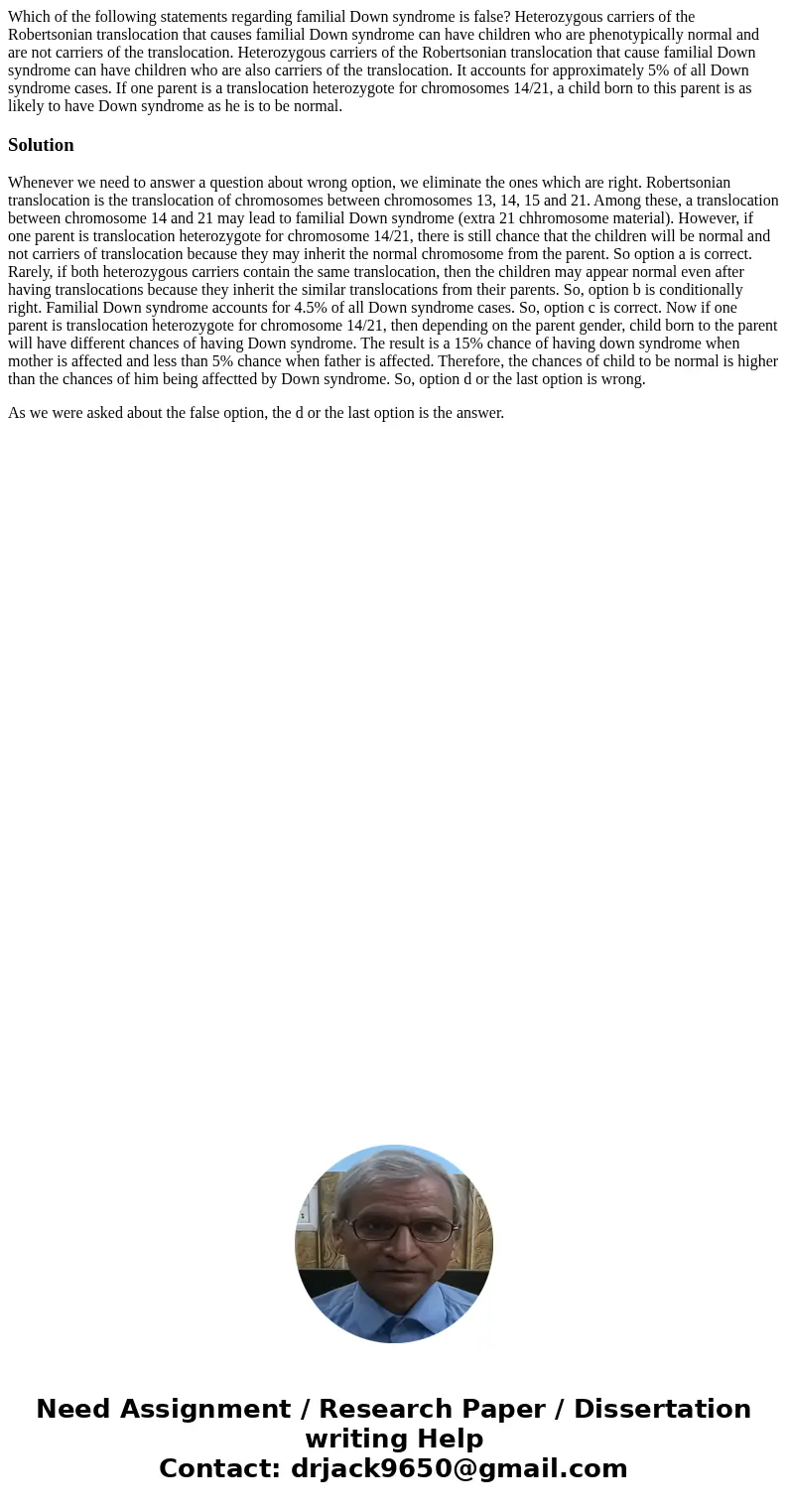Which of the following statements regarding familial Down sy
Solution
Whenever we need to answer a question about wrong option, we eliminate the ones which are right. Robertsonian translocation is the translocation of chromosomes between chromosomes 13, 14, 15 and 21. Among these, a translocation between chromosome 14 and 21 may lead to familial Down syndrome (extra 21 chhromosome material). However, if one parent is translocation heterozygote for chromosome 14/21, there is still chance that the children will be normal and not carriers of translocation because they may inherit the normal chromosome from the parent. So option a is correct. Rarely, if both heterozygous carriers contain the same translocation, then the children may appear normal even after having translocations because they inherit the similar translocations from their parents. So, option b is conditionally right. Familial Down syndrome accounts for 4.5% of all Down syndrome cases. So, option c is correct. Now if one parent is translocation heterozygote for chromosome 14/21, then depending on the parent gender, child born to the parent will have different chances of having Down syndrome. The result is a 15% chance of having down syndrome when mother is affected and less than 5% chance when father is affected. Therefore, the chances of child to be normal is higher than the chances of him being affectted by Down syndrome. So, option d or the last option is wrong.
As we were asked about the false option, the d or the last option is the answer.

 Homework Sourse
Homework Sourse